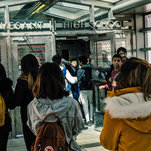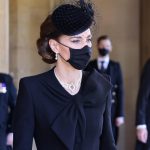Prince William and Kate Middleton: A New Chapter in Windsor
Forest Lodge: Royal Roots Set for Reinvention
Prince William and Kate Middleton are poised to embark on a significant move to Forest Lodge in Windsor Great Park—a residence reportedly intended as their long-term, possibly lifelong, home. The couple aims to make this their base even after William ascends the throne, breaking from centuries of royal tradition that have seen monarchs establish their primary residence at Buckingham Palace. This relocation comes after a particularly challenging year marked by personal struggles, including William’s expanded royal responsibilities following his father’s coronation and Kate’s ongoing recovery following her cancer diagnosis.
The move to Forest Lodge represents a carefully considered decision that reflects the couple’s desire to prioritize family life while fulfilling their royal duties. Sources close to the royal household suggest that the Prince and Princess of Wales have been planning this transition for months, viewing Windsor as the ideal location to raise their three children—Prince George, Princess Charlotte, and Prince Louis—away from the intense scrutiny of central London while remaining accessible for official engagements.
A Fresh Start After a Tough Year
The past twelve months have tested the Wales family in unprecedented ways. Amid profound transitions—including the passing of Queen Elizabeth II, the coronation of King Charles III, and the health challenges facing both the King and Kate—this new home symbolizes more than mere logistics. It represents hope, family cohesion, and stability during a period of significant upheaval within the monarchy.
William has been notably candid about the emotional toll of recent events, describing the past year as one of the most difficult he has experienced. In rare public statements, he has expressed his deep admiration for Kate’s strength and resilience throughout her cancer treatment, while also acknowledging the weight of his increasing responsibilities as heir to the throne. The Prince has spoken of his determination to support his wife’s recovery while ensuring their children maintain as normal a childhood as possible under extraordinary circumstances.
Kate’s health journey has been a closely guarded private matter, with the Princess choosing to step back from public duties during her treatment. Her gradual return to royal engagements has been carefully managed, with Forest Lodge expected to provide the perfect environment for her continued recovery and eventual full return to royal life. The residence offers the privacy and tranquility necessary for healing while remaining close enough to London for essential royal functions.
Forest Lodge: A Home with Heritage
Forest Lodge itself carries significant historical weight within the royal estate. Originally constructed in the 18th century, the property has undergone extensive renovations to meet the specific needs of the modern royal family. The lodge sits within the 4,800-acre Windsor Great Park, offering unparalleled privacy while maintaining the grandeur expected of a future king’s residence.
The property features expansive grounds perfect for the royal children’s outdoor activities, private gardens that Kate is said to be particularly excited about cultivating, and modern security infrastructure necessary for protecting the future monarch and his family. Unlike the formal, ceremonial atmosphere of Buckingham Palace, Forest Lodge is being designed as a genuine family home where William and Kate can raise their children with a greater sense of normalcy.
Royal historians note that the choice of Windsor over other royal residences reflects a broader shift in how the younger generation of royals views their role. Rather than being bound by the formal constraints of palace life, William and Kate appear to be crafting a more accessible, family-centered approach to monarchy that resonates with contemporary British values.
The Children’s Perspective
The move to Forest Lodge is expected to have particular benefits for Prince George, Princess Charlotte, and Prince Louis. Currently students at Lambrook School in Berkshire, the children will find themselves even closer to their educational environment, with the added advantage of extensive grounds for play and exploration. Royal sources suggest that William and Kate are determined to give their children the freedom to be children, despite their unique circumstances.
The proximity to Windsor Castle also means the young royals will grow up with an intimate connection to centuries of royal history while enjoying the relative freedom that Forest Lodge’s private setting provides. This balance between heritage and modernity appears to be a key consideration in the couple’s long-term planning for their family’s future.
Why It Matters Now
The timing and significance of this move extend far beyond residential preferences, representing a fundamental shift in royal thinking and operations.
Breaking Tradition
Unlike most heirs apparent throughout British history, William and Kate seem to be choosing Windsor over Buckingham Palace as their family seat—a notable departure from royal convention that has seen monarchs establish their primary residence in central London. This decision suggests a reimagining of how the monarchy operates, potentially making it more accessible and less tied to the formal grandeur that has sometimes created distance between the royal family and the public.
The choice also reflects practical considerations for a modern royal family. Windsor’s location offers easier access to various parts of the United Kingdom while providing better security and privacy for family life. The decision may set a precedent for future generations of royals who seek to balance public duty with private family needs.
Emotional Renewal and Recovery
Forest Lodge offers sanctuary during Kate’s recovery and provides a sense of normalcy amid intense public scrutiny. The residence represents a safe haven where the family can retreat from the pressures of royal life while remaining connected to their duties. For Kate, who has always valued privacy and family time, the move offers an opportunity to focus on her health and well-being in a supportive environment.
The Princess has long been an advocate for mental health awareness and the importance of stable family environments. Her own experience with health challenges this year has likely reinforced her commitment to creating a nurturing space for her children while managing the demands of royal life.
Signal of Independence and Modern Monarchy
The move is widely interpreted as a statement of autonomy, reflecting the couple’s gradual redefinition of royal life as they prepare for William’s future reign. Rather than simply inheriting traditional approaches to monarchy, William and Kate appear to be actively shaping a more modern, accessible version of royal service that prioritizes family stability and public connection over ceremonial formality.
This approach aligns with broader changes within the monarchy under King Charles III, who has long advocated for a streamlined, more relevant royal institution. The Wales family’s choice to establish their primary residence outside London while maintaining their commitment to royal duties suggests a model that future generations of royals may follow.
Looking Forward: A New Model for Royal Life
The move to Forest Lodge represents more than a change of address—it signals a potential transformation in how the British royal family operates in the 21st century. By choosing to prioritize family life and personal well-being alongside royal duties, William and Kate are demonstrating that tradition and modernity can coexist within the monarchy.
As they prepare for their future roles—William as king and Kate as queen consort—this decision to establish deep roots in Windsor suggests a reign that may be marked by accessibility, family values, and a strong connection to the historical heart of the British monarchy. The success of this approach could influence royal protocol for generations to come, potentially creating a more sustainable model for combining public service with private fulfillment.
The coming years will reveal whether Forest Lodge truly becomes the “forever home” that William and Kate envision, but their commitment to this path suggests a royal couple determined to write their own chapter in the long history of the British crown—one that honors tradition while embracing the needs of a modern family and a changing nation.










